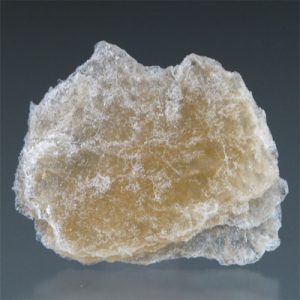Searlesite
Searlesite is a rare silicate mineral that is rarely available faceted due to its soft and fibrous nature. It is not an attractive gem but one that is for collectors of the very unusual. Searlesite is a Piezoelectric mineral, meaning that it has the ability to generate a voltage in response to applied mechanical stress. Relatively large crystals are usually flat and fibrous and occur along bedding planes. Tiny transparent prismatic crystals are much too small for faceting.
Searlesite can be found in the USA, at Searles Lake, San Bernardino County, in the Kramer borate deposit, Kern County, and at Lake Tecopa, Inyo County, California; widespread in the Green River Formation of Utah and Wyoming; from Cave Springs Wash, Silver Peak Range, Esmeralda County, Nevada; and at Point of Rocks, Colfax County, New Mexico. In Canada, at Mont Saint-Hilaire, Quebec. From Kremna, near Tito Uzice; Lopare; and near Bela Stena, Yugoslavia.
| Category: | Phyllosilicate |
| Chemical Formula: | NaBSi2O5(OH)2 |
| Sodium Boron Silicate Hydroxide | |
| Molecular Weight: | 203.98 gm |
| Composition: | Sodium | 11.27 % | Na | 15.19 % | Na2O |
| Silicon | 27.54 % | Si | 58.91 % | SiO2 | |
| Boron | 5.30 % | B | 17.06 % | B2O3 | |
| Hydrogen | 0.99 % | H | 8.83 % | H2O | |
| Oxygen | 54.90 % | O | |||
| 100.00 % | 100.00 % | = TOTAL OXIDE |
| Crystallography: | Monoclinic – Sphenoidal |
| Crystal Habit: | Flat crystals, to 17 cm, occur along bedding planes. Commonly as spherulitic aggregates of radiating acicular to prismatic crystals; as massive granular aggregates. |
| Twinning: | None |
| Cleavage: | Perfect on {100}; imperfect on {102}, {010} |
| Fracture: | Fibrous |
| Tenacity: | Brittle, Fibrous |
| Moh’s Hardness: | 1.0 – 2.0 |
| Density: | 2.44 – 2.46 (g/cm3) |
| Luminescence: | Fluorescent; SW UV = blue green or green, LW UV = orange |
| Radioactivity: | Not Radioactive |
| Other: | Piezoelectric |
| Color: | Colorless, White, light Brown |
| Transparency: | Translucent to Transparent |
| Luster: | Vitreous, slightly pearly on cleavage surfaces |
| Refractive Index: | 1.515 – 1.535 Biaxial ( – ) |
| Birefringence: | 0.0110 – 0.0200 |
| Dispersion: | None |
| Pleochroism: | None |


